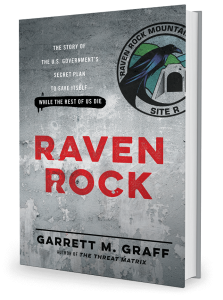Below is the text of my monthly “Editor’s Letter” in the new issue of Washingtonian.
—-
Most Presidents are more than happy to leave Washington the minute their terms are over. The news last fall that the Obamas might stick around for a year or two starting in 2017 so their younger daughter can finish school at Sidwell Friends caused a stir because it’s been generations since an ex-President called DC home. Most return here infrequently and only briefly.
Jimmy Carter passed through recently for Arena Stage’s world premiere of the Lawrence Wright play Camp David, based on Carter’s Middle East peace efforts, and got a rousing ovation from the hometown crowd—but the theater was packed with old friends and colleagues. (See page 24.) When George W. Bush visited DC in 2011 to help unveil a portrait of former Senate majority leader Bill Frist, he told the assembled group, “It takes a really good friend to get me to come back to Washington.”
As long as they’re still alive, ex-Presidents always seem uncomfortable here—and Washington seems uncomfortable with them. It’s apparently a lot easier for us to honor Presidents once they’re dead.
Take Dwight Eisenhower, a beloved and largely noncontroversial chief executive. Across the country, Americans have chosen more than 200 ways to honor Ike: The entire 47,000-mile interstate highway system is named for him, as are a tunnel west of Denver, a street in Dallas, a Boy Scout troop in Niagara Falls, a mountain in New Hampshire, two elementary schools in Florida, two junior highs in Illinois, and a sports league in Kansas. Augusta National, where Eisenhower liked to golf, has Ike’s Pond. There’s the USS Dwight D. Eisenhower, a nuclear-powered aircraft carrier based in Portsmouth, Virginia; a 25-cent postage stamp from the 1990s; even a medium-red hybrid rose.
In the nation’s capital alone, we have the Eisenhower Room at Blair House, the Eisenhower Corridor at the Pentagon, the Eisenhower Theater at the Kennedy Center, Eisenhower Plaza on the 15th Street side of the US Holocaust Memorial Museum, and, right next to the White House, the Eisenhower Executive Office Building, one of the city’s grandest structures, with imposing wooden doors, stately stairwells, gleaming banisters, and intricately patterned floors. It would normally be considered a great memorial—except that it’s not really a memorial.
And that’s the problem: There’s not an official Eisenhower Memorial—which is odd because we have a lot of presidential monuments and memorials in the area. (By the way, I had to look up the difference between a monument and a memorial. The distinction is that memorials typically honor a broader concept than a monument does. Thus, the obelisk on the Mall commemorating George Washington is a monument, whereas Lincoln’s site by the Reflecting Pool—with his statue, engraved words, and symbols of the Union—is a memorial.) Beyond the famous ones around the Mall, honoring everyone from Grant to Lincoln, there are tributes to Presidents as varied as Theodore Roosevelt, Andrew Jackson, James Garfield, Ronald Reagan, and Lyndon Johnson. Even James Buchanan has a statue in Meridian Hill Park, despite being consistently ranked by historians (and his contemporaries) as one of the worst Presidents ever.
It’s long been a sticking point for certain people that we don’t have a memorial in Washington for Eisenhower, the man who led the Allied invasion of Europe in World War II and led us peacefully through the beginning of the Cold War amid historic prosperity and growth.
In this issue, Carol Ross Joynt writes about a group of powerful Washingtonians who banded together to remedy that situation (page 62). Yet instead of a grand Eisenhower Memorial opening next year as originally planned, the project looks as if it might be dead for good, the victim of infighting among the luminaries assembled to honor the man who helped save the free world twice. As one of them told Joynt, “Winning World War II was easier.”
It certainly took a lot less time.



Recent Comments